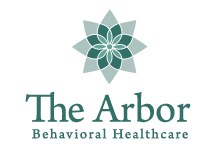The rate of addiction to the substances known as opioids is rising and there is a growing need for education about opioids and for effective opioid addiction treatment. All opioids are substances that are developed either naturally or synthetically from the opium plant, a type of poppy that grows in the wild in Asia and is increasingly cultivated all over the world. While heroin is the most frequently used semi-synthetic opioid, codeine, oxycodone, morphine, fentanyl, thebaine, and Percocet are also prevalent forms of the substance and all of these substances are becoming abused more and more. Regardless of the brand, or how it is obtained, all opioids are addictive given enough time. The opioids are also known as opiates and the two terms are used interchangeably. Some people mistakenly believe that just because they started taking an opiate as a prescription by a doctor that they cannot become addicted. This is not true. Often people become addicted when using it to treat a legitimate medical condition and then cannot stop when that condition has healed, so they turn to illegal means to continue obtaining the opiate. As the opiate user restructures their life around the need to acquire and use opiates, everything in the addict’s life may seem as though it is falling apart. As individuals sink into the abyss of opiate addiction and its many detrimental effects on the body, mind and spirit, many users and their family and friends as well lose hope that things will ever get better and they resolve themselves to the never-ending cycle of harm that comes from opiate addiction. Opiate addiction is a disorder of the nervous system that is caused by regular opiate use. Opiates are addictive substances, whether they are obtained legally or illegally. The more that someone uses opiates the more the body becomes physically dependent on them as it adjusts to opiate consumption and loses the ability to produce its own natural painkillers, endorphins. Over time it takes more and more of the opiate substance to maintain the same pain relief or “buzz” and suddenly stopping the intake of opiates becomes dangerous due to withdrawal symptoms that sometimes result in death. This is why it is so very hard to treat opiate addiction successfully and why it is imperative to receive appropriate addiction help and support when fighting addiction to any of the opioids. Withdrawal symptoms for any of the opioids share a similar profile. Symptoms of withdrawal start as the body and mind start to compensate for the loss of the tolerated dose of the substance. Many of these symptoms are painful or annoying and can include diarrhea, sweating, runny nose and watery eyes, vomiting and nausea, shaking, shivering, convulsions, muscle aches and cramps, restlessness and insomnia, irritability, anxiety, loss of appetite, compulsions to reuse the drug and many more. Dehydration from vomiting and diarrhea may become life threatening and the craving to use just one more dose of the drug to stop the withdrawal symptoms can be overwhelming. For these reasons opioid addiction treatment is best conducted under observation and in a safe setting where addiction counselors and other medical professionals can best address the needs of the addict.
